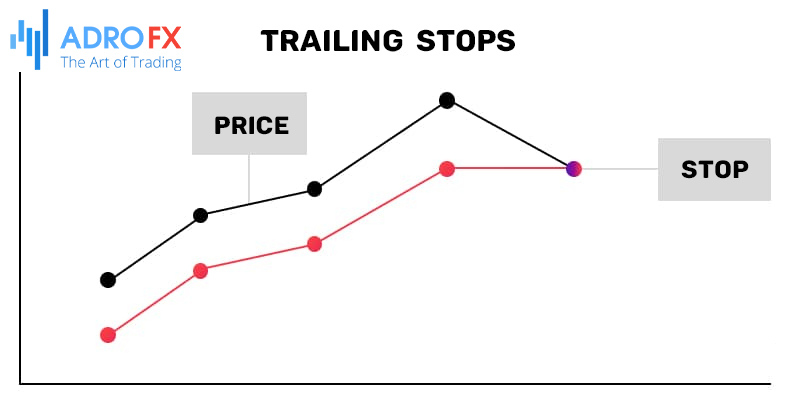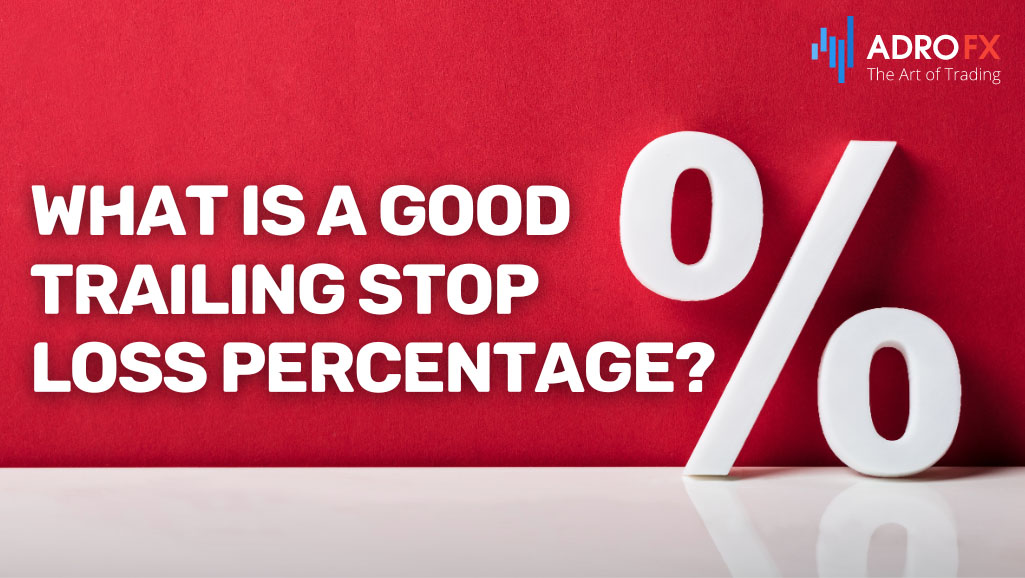Balancing Risk and Reward: Unveiling the Power of Trailing Stop Loss in Financial Markets

Navigating the intricate landscape of financial markets, where assets fluctuate in value, demands adept risk management strategies. For those unacquainted with trading, the endeavor involves buying and selling financial instruments like stocks, cryptocurrencies, or forex. In this dynamic realm, the significance of risk management cannot be overstated. It's akin to choreographing a delicate dance between potential gains and potential losses. A pivotal tool in this dance is the trailing Stop Loss, a dynamic approach that adapts to market fluctuations. Let's delve into the workings of a trailing Stop Loss and how it plays a crucial role in securing profits while mitigating potential losses for traders.
What Is A Trailing Stop Loss?
A trailing Stop Loss is a risk management strategy used by investors and traders to limit potential losses while maximizing profits. Unlike a traditional Stop Loss order, which is a static price set below the current market price, a trailing Stop Loss adjusts dynamically based on the asset's price movement.

Here's how a trailing Stop Loss works:
- Setting the Initial Stop
When an investor buys a security, they set an initial Stop Loss level. This level is typically defined as a percentage or a fixed amount below the purchase price. - Dynamic Adjustment
As the asset's price rises, the trailing Stop Loss follows or "trails" it, maintaining the set percentage or fixed amount distance. The Stop Loss is not triggered as long as the price moves in a favorable direction. - Locking in Profits
If the asset's price increases, the trailing Stop Loss moves upward, effectively "locking in" profits. This allows investors to capitalize on a rising market while protecting their gains. - Triggering the Stop
If the asset's price reverses and falls, the trailing Stop Loss triggers a market order once it reaches the specified distance from the highest price attained. This helps limit potential losses in the event of a market downturn.
In summary, a trailing Stop Loss is a flexible risk management tool that adapts to market conditions. It provides a balance between allowing profits to grow during uptrends and protecting against significant losses during downtrends. Traders often use trailing Stop Loss orders to automate the process and remove emotional decision-making from their trading strategies.
How To Set A Trailing Stop Loss?
Setting up a Trailing Stop Loss involves a strategic approach tailored to individual preferences and market conditions. It's crucial to underscore the importance of choosing a suitable trailing amount, considering both the trader's risk tolerance and the prevailing market dynamics. This ensures a balance between flexibility and protection against potential losses.
Here's a step-by-step guide on how to set a trailing Stop Loss:
- Choose a Trading Platform
Use a reputable trading platform or broker that supports trailing Stop Loss orders. Not all platforms offer this feature, so ensure your chosen platform provides the functionality. - Select the Asset
Choose the asset (stock, cryptocurrency, forex pair, etc.) for which you want to set a trailing Stop Loss. - Determine the Trailing Amount
Decide on the trailing amount, which can be specified as a percentage or a fixed amount. This is the distance between the current market price and the trailing Stop Loss level. - Place a Trailing Stop Loss Order
Access your trading platform and locate the option to place an order. Look for the trailing Stop Loss order type. - Enter Order Details
Specify the quantity (number of shares, units, or contracts) you want to trade.
Choose the trailing amount (percentage or fixed amount).
Set any additional parameters, such as duration (day order, good 'til canceled, etc.). - Review and Confirm
Double-check all the details of your order, including the trailing amount and quantity.
Confirm that you want to place a trailing Stop Loss order. - Monitor and Adjust
Once the order is executed, monitor the market and the performance of your asset.
If the asset's price rises, the trailing Stop Loss will adjust upward, securing profits.
If the price falls, the trailing Stop Loss will eventually trigger a market order to sell, limiting potential losses. - Periodically Review and Update
Regularly assess the market conditions and your investment goals.
Consider adjusting the trailing Stop Loss level based on changes in volatility or significant price movements. - Understand Platform-Specific Features
Familiarize yourself with any specific features or settings related to trailing Stop Loss orders on your chosen trading platform.
Additionally, traders should remain vigilant about the specific features related to trailing Stop Loss orders on their chosen platform. Each platform may have unique functionalities or settings, and understanding these nuances is essential for effective implementation. By incorporating these considerations into the setup process, traders can enhance the precision and adaptability of their Trailing Stop Loss orders.
It's crucial to note that while trailing Stop Loss orders provide a level of automated risk management, they do not guarantee protection in all market conditions. Traders should stay informed about the market and be prepared to adjust their strategies accordingly. Additionally, different platforms may have variations in how trailing Stop Loss orders are implemented, so it's essential to understand the specific features of the platform you are using.

Disadvantages Of Trailing Stop Loss
While trailing Stop Loss orders offer benefits in risk management, they also come with certain disadvantages that traders should consider:
- Market Volatility
In highly volatile markets, trailing Stop Loss orders may be triggered prematurely, leading to selling assets at a lower-than-desired price. - Whipsaw Movements
Trailing Stop Loss orders can be susceptible to whipsaw movements, where the price fluctuates quickly and triggers the Stop Loss before resuming its original direction. - Intraday Price Fluctuations
For intraday traders, frequent price fluctuations within a trading session may result in multiple Stop Loss triggers, potentially eroding profits. - Overemphasis on Short-Term Movements
Trailing Stop Loss orders might focus excessively on short-term price movements, causing premature exits and overlooking the long-term potential of an asset. - Not Foolproof
Trailing Stop Loss orders do not guarantee protection against all market conditions, and unexpected events or gaps may lead to losses beyond the specified stop level. - Technical Glitches
In rare instances, technical glitches on the trading platform could impact the execution or adjustment of trailing Stop Loss orders. - Overdependence on Automation
Relying solely on automated trailing Stop Loss orders without considering broader market trends or news events may result in suboptimal decision-making. - Psychological Impact
Traders may experience psychological stress if they observe frequent triggering of trailing Stop Loss orders, leading to emotional decision-making. - Risk of Missed Opportunities
A tight trailing Stop Loss may protect against losses but might lead to missing out on potential upward movements if the asset experiences temporary dips. - Execution Timing
The effectiveness of trailing Stop Loss orders depends on the timing of execution, and delays in order processing could impact the actual exit price.
It's important to note that the disadvantages mentioned are considerations rather than absolute drawbacks. This clarification is essential for users to understand that these points are factors to be weighed in their decision-making process rather than strict limitations of the trailing Stop Loss strategy.
Understanding these disadvantages can help traders make informed decisions about when and how to use trailing Stop Loss orders in their overall risk management strategy. It's essential to consider individual trading preferences, investment goals, and the specific characteristics of the assets being traded.

Trailing Stop Limit Vs Trailing Stop Loss
Trailing Stop Loss and Trailing Stop Limit are both order types used in trading to manage potential losses, but they differ in their execution mechanisms. Here's a brief comparison:
Trailing Stop Loss
A Trailing Stop Loss order is designed to limit losses by automatically adjusting the stop price as the market price moves in a favorable direction. When the market price rises, the stop price trails behind it at a set distance. If the market price falls, the stop price remains unchanged. Once the market price hits or goes beyond the stop price, a market order is triggered to sell the asset.
Trailing Stop Limit
Trailing Stop Limit orders combine elements of both stop loss and limit orders. Similar to a Trailing Stop Loss, the stop price adjusts as the market price moves favorably. However, instead of triggering a market order when the stop price is reached, a limit order is placed. This limit order specifies the minimum price at which the asset should be sold. If the market price reaches or surpasses the stop price, a limit order is triggered, and the asset is sold at the set limit price or better.
The distinctions between Trailing Stop Loss and Trailing Stop Limit are notable:
- Order Type
Trailing Stop Loss executes a market order upon reaching the stop price, whereas Trailing Stop Limit initiates a limit order under the same condition. - Execution Certainty
Trailing Stop Loss ensures execution without specifying the exact selling price, while Trailing Stop Limit stipulates a specific price or better, with no guarantee of execution if the limit price isn't met. - Price Adjustment
Both orders automatically adjust the stop price in response to favorable market movements. - Flexibility
Trailing Stop Loss is straightforward and simpler in its execution, while Trailing Stop Limit, though offering more control over the selling price, introduces complexity. - Considerations
Traders prioritizing execution speed and simplicity may lean towards Trailing Stop Loss, while those seeking more control over the selling price and accepting potential non-execution risk may find Trailing Stop Limit suitable.
Factors such as market conditions and asset liquidity should be taken into account, influencing the effectiveness of both order types.
Choosing between Trailing Stop Loss and Trailing Stop Limit depends on individual trading strategies, risk tolerance, and preferences regarding execution and price control.

What Is A Good Trailing Stop Loss Percentage?
Selecting an appropriate trailing stop loss percentage involves considering several factors that impact a trader's decision. There is no one-size-fits-all answer, and the choice depends on individual preferences and market conditions.
The volatility of the asset is a key consideration. More volatile assets may require a larger trailing Stop Loss percentage to accommodate their price fluctuations, while less volatile assets might necessitate a smaller percentage.
Trader risk tolerance plays a significant role. Those with a higher risk tolerance may opt for a larger trailing Stop Loss percentage to provide the trade with more flexibility, while conservative traders may prefer a smaller percentage to minimize potential losses.
Market conditions also influence the decision. Trending markets may warrant a larger trailing Stop Loss percentage to capture substantial price movements, whereas choppy or ranging markets may benefit from a smaller percentage to avoid premature exits.
The chosen time frame for trading is a factor. Short-term traders might use a smaller trailing Stop Loss percentage for quicker decision-making, while long-term investors could employ a larger percentage to accommodate extended price fluctuations.
Historical analysis of an asset's price movements can offer insights into setting an appropriate trailing Stop Loss percentage. Traders may adjust the percentage based on past trends and behaviors.
The overall trading strategy, including profit targets and risk-reward ratios, should guide the selection of the trailing Stop Loss percentage. It is also essential to consider how trailing Stop Loss percentages interact with other risk management tools, such as position sizing, to create a comprehensive risk management strategy.
Selecting an appropriate trailing Stop Loss percentage involves considering several factors that impact a trader's decision. It's crucial to remember that the choice of the trailing Stop Loss percentage is subjective and may require adjustment based on the trader's evolving experience and the ever-changing dynamics of market conditions. This flexibility allows traders to adapt their strategies to the current market environment and refine their approach over time.
It's important to note that there is no universally "good" trailing Stop Loss percentage. Traders often experiment with different percentages based on their experience and adapt their approach as they observe market conditions. Regularly adjusting the trailing Stop Loss as the trade progresses allows for a dynamic response to evolving market dynamics and risk factors. The goal is to strike a balance between providing the trade enough room to develop and protecting against significant losses.
Conclusion
In summary, the implementation of a trailing Stop Loss emerges as a pivotal strategy in the intricate world of trading. This dynamic tool not only empowers traders to secure profits while mitigating potential losses but also plays a crucial role in maintaining a delicate balance between risk and reward. As traders integrate trailing Stop Loss orders into their toolkit, they gain the ability to navigate the complexities of financial markets with greater confidence.
In the ever-evolving landscape of trading, continuous education and staying abreast of market trends remain paramount. By staying informed, traders can enhance their understanding of the nuanced dynamics at play and make informed decisions in response to changing market conditions. This commitment to ongoing learning positions traders for greater success and resilience in the dynamic realm of financial markets.
About AdroFx
Established in 2018, AdroFx is known for its high technology and its ability to deliver high-quality brokerage services in more than 200 countries around the world. AdroFx makes every effort to keep its customers satisfied and to meet all the trading needs of any trader. With the five types of trading accounts, we have all it takes to fit any traders` needs and styles. The company provides access to 115+ trading instruments, including currencies, metals, stocks, and cryptocurrencies, which make it possible to make the most out of trading on the financial markets. Considering all the above, AdroFx is the perfect variant for anyone who doesn't settle for less than the best.










